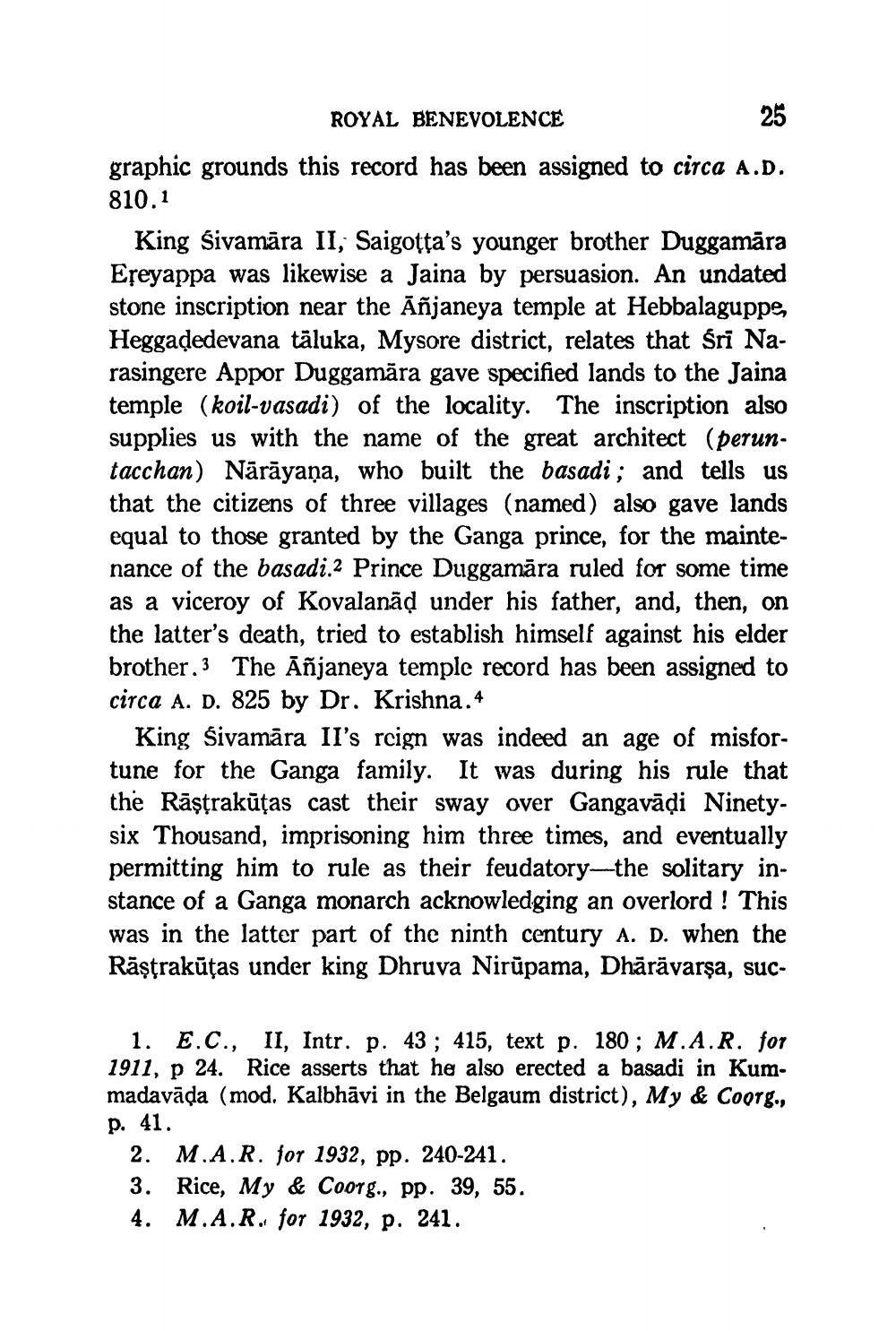________________
ROYAL BENEVOLENCE
graphic grounds this record has been assigned to circa A.D. 810.1
King śivamāra II, Saigoțța's younger brother Duggamāra Ereyappa was likewise a Jaina by persuasion. An undated stone inscription near the Añjaneya temple at Hebbalaguppe, Heggadedevana tāluka, Mysore district, relates that śri Narasingere Appor Duggamāra gave specified lands to the Jaina temple (koil-vasadi) of the locality. The inscription also supplies us with the name of the great architect (peruntacchan) Nārāyaṇa, who built the basadi ; and tells us that the citizens of three villages (named) also gave lands equal to those granted by the Ganga prince, for the maintenance of the basadi.2 Prince Duggamāra ruled for some time as a viceroy of Kovalanād under his father, and, then, on the latter's death, tried to establish himself against his elder brother. The Añjaneya temple record has been assigned to circa A. D. 825 by Dr. Krishna. 4
King śivamāra II's reign was indeed an age of misfortune for the Ganga family. It was during his rule that the Rāştrakūtas cast their sway over Gangavāại Ninetysix Thousand, imprisoning him three times, and eventually permitting him to rule as their feudatory—the solitary instance of a Ganga monarch acknowledging an overlord ! This was in the latter part of the ninth century A. D. when the Rāştrakūtas under king Dhruva Nirūpama, Dhārävarşa, suc
1. E.C., II, Intr. p. 43; 415, text p. 180 ; M.A.R. for 1911, p 24. Rice asserts that he also erected a basadi in Kummadavāda (mod. Kalbhāvi in the Belgaum district), My & Coorg., p. 41.
2. M.A.R. for 1932, pp. 240-241. 3. Rice, My & Coorg., pp. 39, 55. 4. M.A.R. for 1932, p. 241.




